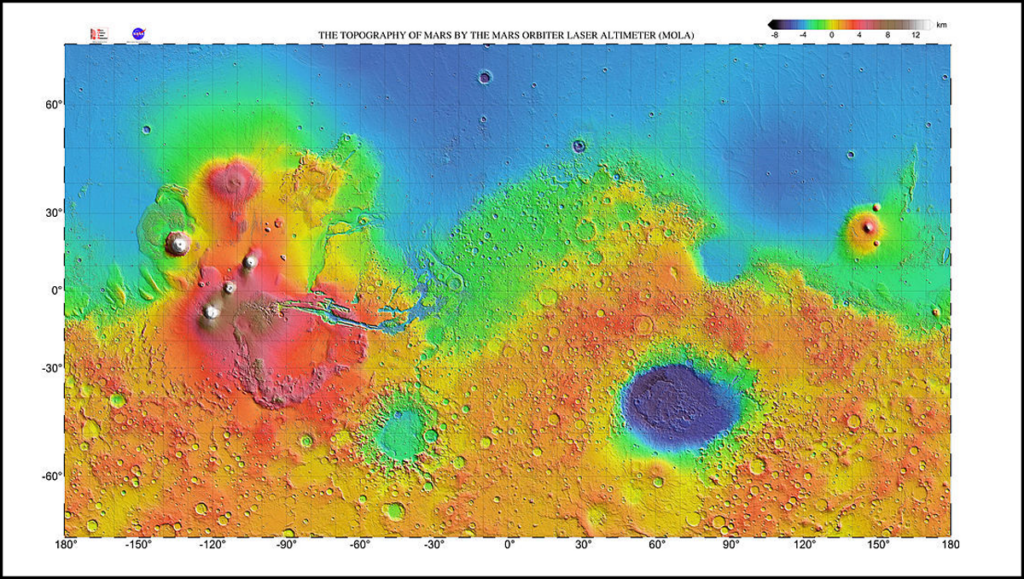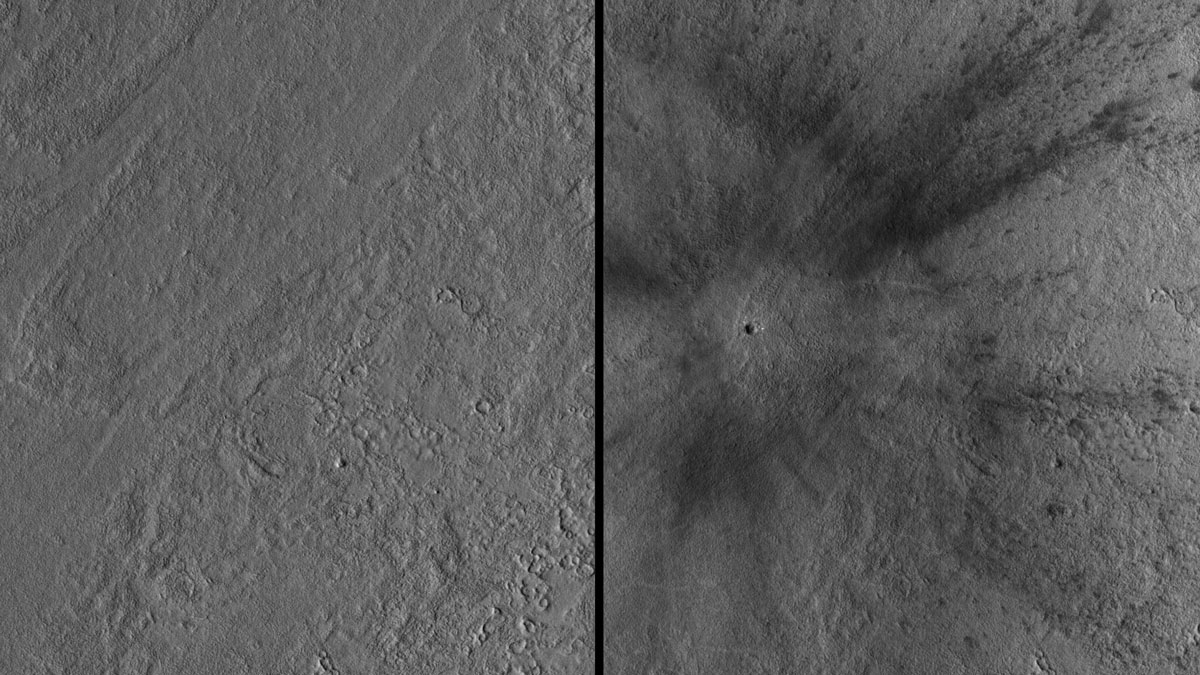For almost 4 years, NASA’s InSight (Interior Exploration using Seismic Investigations, Geodesy and Heat Transport) lander has recorded seismic data used to probe Mars’s interior. Waves from marsquakes have given scientists a glimpse of the Red Planet’s inner layers. Now, a meteor strike has enabled researchers to home in on the crust, refining our understanding of the planet’s structure and history.
On 24 December 2021, InSight registered vibrations equivalent to a magnitude 4.0 marsquake. Satellite images of a 150-meter-wide crater later confirmed that a meteor had struck thousands of kilometers away from the lander. A meteor hitting Mars isn’t unusual; InSight has detected multiple impacts in its lifetime. But this particular shock excited seismologists because unlike previously recorded impacts, it was strong enough to produce surface waves.
As their name suggests, surface waves travel through a planet’s outermost layer. Previously, InSight’s seismometers had recorded only “body” waves, which dive deep into the mantle. “The detection and identification of surface waves is exciting because it’s the first time they’ve been observed on a planetary body other than Earth,” explained Doyeon Kim, a geophysicist at ETH Zurich and coauthor of a study, published in Science, analyzing the impact. Ceri Nunn, a planetary seismologist at NASA’s Jet Propulsion Laboratory who was not involved with the study, said of the first detection of surface waves: “This is really exciting work.”
Imaging Mars, Skin Deep
Seismologists use seismic waves to illuminate a planet’s interior in much the same way that doctors use X-rays to image bodies.
Seismologists use seismic waves to illuminate a planet’s interior in much the same way that doctors use X-rays to image bodies. As X-rays and seismic waves pass through matter, their speed and energy change according to the medium’s physical properties. Seismic waves propagate rapidly through dense, stiff materials but slow when passing through porous or soft media. Researchers can use this relationship to infer a planet’s structure and composition from seismic data.
Until now, InSight’s data have furnished information about Mars’s core and mantle and have informed the first estimates of crustal thickness. But the structure of the Martian crust has remained enigmatic. “Previous studies about the interior structure of Mars could only use body waves, [which] has limited what we can learn about Mars’s crust,” said Kim.
“The detected surface waves provide a great opportunity for glimpsing the crustal structure on Mars away from the lander.”
Unlike body waves, which sample only a tiny sliver of crust directly underneath a seismometer, surface waves spread across a planet’s surface like ripples on water and interact with wide swaths of the crust. For this reason, Kim said, “the detected surface waves provide a great opportunity for glimpsing the crustal structure on Mars away from the lander.” Using information from the waves generated by the meteor strike, Kim and his coauthors pieced together an image of the Martian crust—with surprising results.
A Puzzling Martian Landscape
Previous studies using body waves indicated that the crust at InSight’s location near Mars’s equator is porous and has low density. Kim and his coauthors confirmed this characterization with the impactor data but found the crust elsewhere to be markedly different; the Martian crust between the recent crater and InSight is relatively uniform and denser than the material beneath the lander. The dense crust is consistent with waves traversing one of the largest volcanic provinces in Mars’s northern hemisphere, said Kim, because volcanic basalts are typically dense and rigid. Why InSight’s landing site differs from the surrounding crust remains an open question, but the presence of subsurface ice or loose, fragmented debris of a long-ago meteor impact is a possible explanation.
But the Martian crust poses even bigger puzzles. Since the first space probes visited Mars, scientists have observed that the planet’s northern hemisphere is dominated by low-lying volcanic plains, whereas the southern hemisphere consists of heavily cratered highlands. What caused this conspicuous pattern is hotly debated. Some researchers have theorized that processes in an early magma ocean could have produced two different types of crust, whereas others hold a giant impact responsible.
Data from the recent impact may help to resolve this mystery. Kim and his coauthors found that surface waves travel at similar speeds in the northern and southern hemispheres. If the team’s interpretation is correct, the composition of the crust may be similar in both hemispheres, supporting the idea that the Martian landscape was initially homogeneous and was later transformed by magmatism or impacts.

“This is a reasonable interpretation of the evidence,” said Nunn, “but it is only based on a single observation of a surface wave.” Kim and Nunn noted that new data from a Martian “monster quake” recorded in May will likely improve our understanding of the contrasting landscape.
All Planets Have Secrets
“We’ve been very surprised by the results from the Moon and Mars. My prediction is that future seismic missions will also contain surprises.”
After InSight powers down at the end of 2022, researchers will have to wait for another mission to collect more seismic data on the Red Planet. But Nunn is optimistic about the future of Martian seismology. “I think all the planets have their secrets,” she said. “We’ve been very surprised by the results from the Moon and Mars. My prediction is that future seismic missions will also contain surprises.”
—Caroline Hasler (@carbonbasedcary), Science Writer

